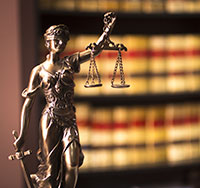A Few Good Practice Habits: Examination for Discovery

An examination for discovery often marks the point in which you really sink your teeth into a case. The parties and opposing counsel come to a face-to-face meeting, and key evidence comes out, warts and all. Much of the exploration in an examination for discovery will uniquely depend on the specific witness and the answers that are drawn out. But some answers call for a habitual, routine response. Here are some good practice habits to use at examinations for discovery and avoid malpractice claims.
Your Notes: Boldface Undertakings, Questions Taken Under Advisement, and Refusals
It goes without saying that you should take detailed notes at every examination for discovery. But go one step further with undertakings, questions taken under advisement, and refusals. Every time one of these is given or refused, it can cue you to trigger a routine response: write it down on a separate line and boldface it (or for those who write on paper, circle it).
This goes for promises you have made, including undertakings you have promised, questions taken under advisement, and questions refused. And similarly for promises the opposing party has made or refused. The reward is this: at the end of the discovery, it will be easy to find and extract the undertakings, questions taken under advisement, and refusals, and place them into a chart to request from the parties or to fulfill yourself. Consistently adhering to this habit means you are unlikely to miss these, or that there will be disagreement between the parties about who has promised what, before transcripts are released.
Your Notes: Keep a “To-Do” List at the End of the Document
Answers during a discovery can surprise you. The witness can turn around and blame another party not yet involved in the litigation. This is a cue to make a note of it at the end of your notes (or for those on paper, on a clean sheet of paper): “commence third party action against so-and-so ASAP. Limitation period in 90 days!” Another cue is when you realize you need to investigate an issue further by retaining an expert for an opinion. Add it to the to-do list. A third cue is when a point of law has come up and you need to research the issue. Add it to the to-do list!
End of Discovery: Do the “To-Do” List, While You Are There
When a discovery is completed and you hear words to the effect of “those are my questions”, that is a cue for you to review the notes you have just taken and email follow-up instructions to your team. Your first instinct may be to stand up, shake hands, and leave the room after a trying discovery. Even the dentist wants to leave the room after prying teeth. But the interview room is presumably booked and all yours, and you can spend a little more time taking critical steps that will save you from doing them later. It is also helpful to take these steps while the discovery is fresh in your head:
- Put together the undertakings, questions taken under advisement, and refusals chart. Email the chart(s) to your assistant, or file them away. This can include an email instructing the assistant to send a reminder to the opposing party in 30 days to follow up on undertakings given, to request answers for questions taken under advisement, and to reconsider refusals. It is also a good time to give instructions to your assistant to fulfil the undertakings you have given.
- Go through your to-do list and email instructions to your assistant. This includes adding third parties, retaining experts, and booking another meeting with your client.
Know Your Cues, Respond Routinely
Developing good practice habits applies to discovery as much as it does other aspects of practice management. Remember a habit consists of four basic elements: a cue, a routine, a reward, and a belief that the habit is worth having. Understand the cues, whether it’s an undertaking that’s been given, an answer from the witness that blames a party not involved in the litigation, or a realization you need to do research on a certain issue. Respond with a routine that is the same every time, and respond immediately. The reward is running a litigation practice that is just that much more efficient and less at risk for malpractice claims.

Leave a Reply